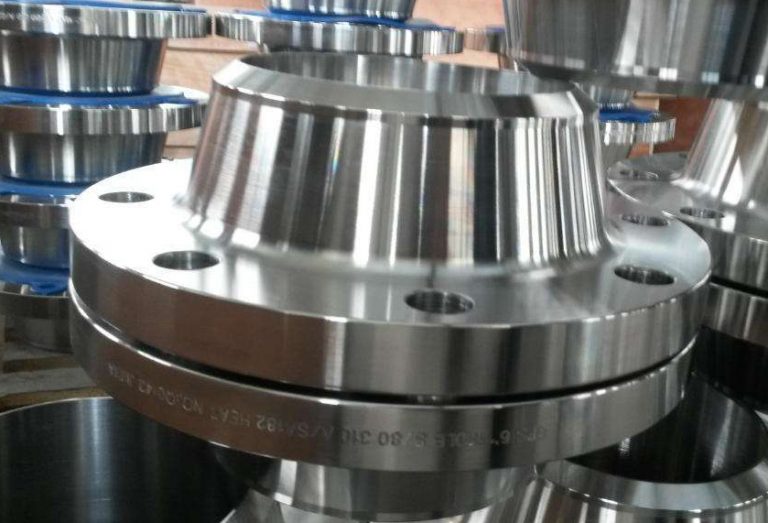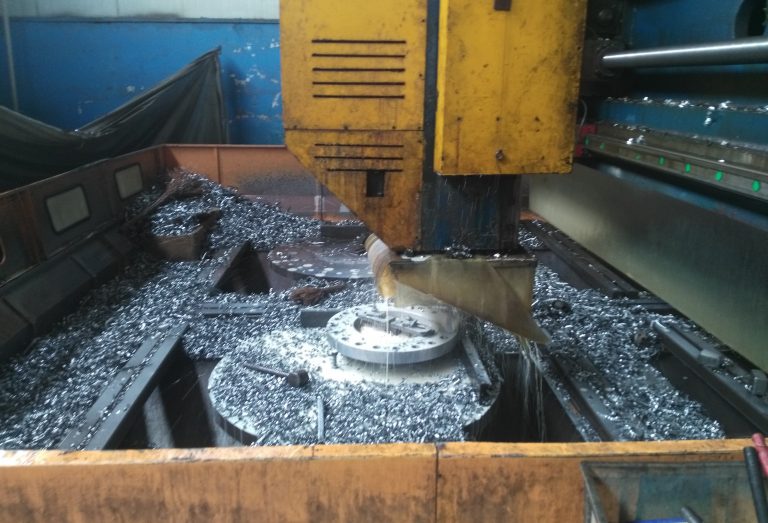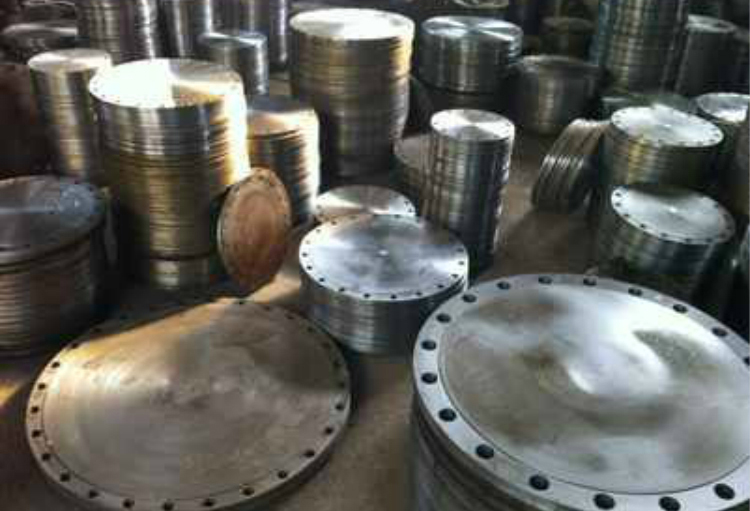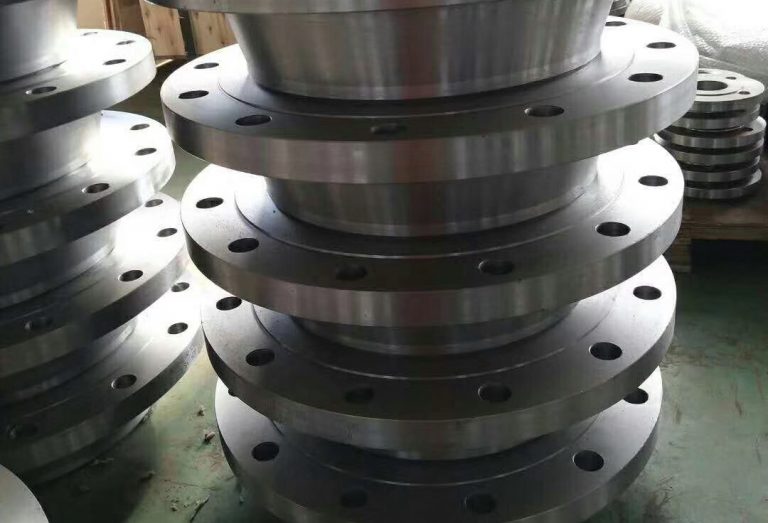I. Introduction
Flanges play a critical role in many industrial applications by connecting pipes, valves, pumps, and other components. However, not all flanges are created equal, and it’s important to choose the right type for your specific needs. This is where ANSI and ASME standards come into play. ANSI and ASME are two of the most widely used standards for industrial components, including flanges. In this blog post, we’ll explore the key differences between ANSI flange and ASME flange, including their definitions, characteristics, types, applications, advantages, and disadvantages. By the end of this post, you’ll have a better understanding of which type of flange is best suited for your application.
| Category | ANSI Flanges | ASME Flanges |
| Physical Differences | Larger sizes, higher pressure, and temperature ratings | Larger sizes, higher pressure and temperature ratings |
| Performance Differences | Limited suitability for high-pressure and high-temperature applications | Suitable for high-pressure and high-temperature applications |
| Material Range | Limited range of materials (carbon steel, stainless steel, alloy steel) | Wide range of materials available |
| Standardization | ANSI B16.5, ANSI B16.47, and other ANSI standards | ASME B16.5, ASME B16.47, and other ASME standards |
| Cost | Generally less expensive than ASME flanges | Generally more expensive than ANSI flanges |
| Installation and Maintenance | Easy to install and remove, suitable for frequent maintenance | Requires more specialized installation and maintenance |
| Availability | Widely available from various manufacturers | Availability may be limited due to higher manufacturing standards |
II. ANSI Flanges
A. Definition and characteristics of ANSI flanges
ANSI flanges are a type of flange that conform to the standards set by the American National Standards Institute (ANSI). ANSI is a non-profit organization that develops and publishes voluntary consensus standards for a wide range of industrial products, including flanges.
The characteristics of ANSI flanges include:
- Size Range: ANSI flanges are available in a wide range of sizes from 1/2 inch to 24 inches and above.
- Pressure Ratings: ANSI flanges are designed to withstand specific pressure ratings, which are based on the material of construction and the temperature of the system. ANSI flanges are typically rated up to 2500 psi.
- Facing Types: ANSI flanges are available with different types of faces, including raised faces, flat faces, and ring joint faces. The facing type is selected based on the application requirements.
- Materials: ANSI flanges are available in a variety of materials, including carbon steel, stainless steel, and alloy steel. The material selected depends on the application requirements.
- Bolt Holes: ANSI flanges have bolt holes that are designed to match the bolt holes of the connecting flange. The number and size of bolt holes vary based on the flange size and pressure rating.
- Standards: ANSI flanges are manufactured in accordance with ANSI B16.5 or ANSI B16.47 standards. ANSI B16.5 is the most commonly used standard for ANSI flanges, while ANSI B16.47 is used for larger diameter and higher pressure applications.
Overall, ANSI flanges are known for their versatility, reliability, and ease of installation. They are widely used in various industries, including oil and gas, chemical, and water treatment plants.

B. Types of ANSI flanges
There are two main types of ANSI flanges: ANSI B16.5 flanges and ANSI B16.47 flanges.
- ANSI B16.5 Flanges: ANSI B16.5 flanges are the most commonly used type of ANSI flange. They are designed for use in low-pressure and low-temperature applications. ANSI B16.5 flanges have a raised face and are available in a range of pressure classes, from 150 to 2500 psi. They are used in a variety of industries, including chemical, petrochemical, and water treatment plants.
- ANSI B16.47 Flanges: ANSI B16.47 Flanges, also known as Large Diameter Steel Flanges (LDSF), are designed for use in high-pressure and high-temperature applications. They are typically used in the oil and gas industry and in power generation facilities. ANSI B16.47 flanges are available in two types: Series A and Series B. Series A flanges are similar to ANSI B16.5 flanges and have a raised face, while Series B flanges have a ring joint face. ANSI B16.47 flanges are available in pressure classes ranging from 75 to 900 psi.
In addition to these two main types, there are also other types of ANSI flanges, such as ANSI B16.36 Orifice Flanges, ANSI B16.48 Spectacle Blind Flanges, and ANSI B16.9 Lap Joint Flanges. These flanges are used in specific applications where flow control, pressure measurement, or visual inspection is required.
Overall, the selection of the appropriate type of ANSI flange depends on the application requirements, such as pressure, temperature, and size. By choosing the right type of flange, the system can operate safely and efficiently.
C. Applications of ANSI flanges
- Oil and gas industry: ANSI flanges are used extensively in the oil and gas industry for connecting pipelines and equipment such as valves, pumps, and compressors.
- Chemical industry: ANSI flanges are also commonly used in chemical processing plants for connecting pipes and equipment that handle corrosive chemicals and other hazardous materials.
- Water treatment plants: ANSI flanges are used in water treatment plants for connecting pipes and equipment used in water filtration, purification, and distribution systems.
- HVAC systems: ANSI flanges are used in heating, ventilation, and air conditioning (HVAC) systems for connecting pipes and equipment such as boilers, chillers, and air handlers.
- Power generation: ANSI flanges are used in power generation facilities for connecting pipes and equipment such as turbines, boilers, and condensers.
- Food and beverage industry: ANSI flanges are used in the food and beverage industry for connecting pipes and equipment that handle food-grade materials.
Overall, ANSI flanges are widely used in various industries that require reliable and secure connections between piping systems and equipment.
D. Advantages and disadvantages of ANSI flanges
Advantages:
- Cost-effective: ANSI flanges are generally less expensive than ASME flanges, making them a cost-effective choice for smaller piping systems with lower pressure requirements.
- Standardization: ANSI flanges are manufactured according to standard dimensions and specifications, ensuring compatibility and interchangeability with other ANSI flanges from different manufacturers.
- Easy installation and maintenance: ANSI flanges are easy to install and remove, making them an ideal choice for piping systems that require frequent maintenance and repairs.
- Availability: ANSI flanges are widely available from a variety of manufacturers, making them an accessible option for many industries and applications.
Disadvantages:
- Limited pressure and temperature ratings: ANSI flanges have lower pressure and temperature ratings compared to ASME flanges, which makes them less suitable for high-pressure and high-temperature applications.
- Limited range of materials: ANSI flanges are typically made from a limited range of materials such as carbon steel, stainless steel, and alloy steel, which can limit their suitability for certain corrosive environments.
- Limited range of sizes: ANSI flanges are available in a limited range of sizes, which can limit their suitability for larger piping systems.
Overall, ANSI flanges offer several advantages in terms of cost, standardization, and ease of installation, but they may not be suitable for all applications due to their limited pressure and temperature ratings, range of materials, and sizes.
III. ASME Flanges
A. Definition and characteristics of ASME flanges
ASME flanges are a type of pipe fitting used to connect sections of pipe or other equipment to form a piping system. They are designed and manufactured according to the standards set by the American Society of Mechanical Engineers (ASME). ASME flanges are made from a range of materials, including carbon steel, stainless steel, and exotic alloys.
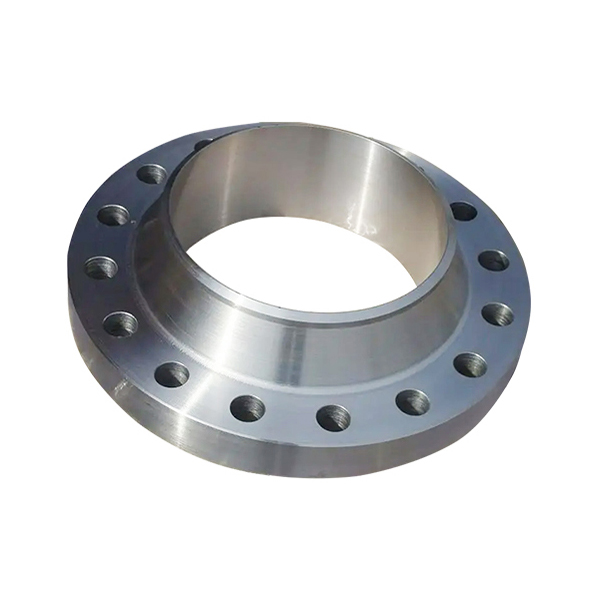
The characteristics of ASME flanges include:
- High Pressure and Temperature Rating: ASME flanges are designed to withstand high-pressure and high-temperature applications, making them suitable for critical applications.
- Compatibility: ASME flanges are compatible with a range of materials, including different grades of steel, stainless steel, and exotic alloys.
- Various Types: ASME flanges come in various types, including welding neck, slip-on, socket weld, lap joint, threaded, and blind flanges. Each type is designed for a specific application.
- Different Ratings: ASME flanges are available in different pressure classes, ranging from 150 to 2500. The pressure class depends on the application and the pressure and temperature requirements.
- Standard Dimensions: ASME flanges have standard dimensions, ensuring that they are interchangeable with other flanges manufactured to the same standards.
Overall, ASME flanges are a critical component in many industrial applications where safety, reliability, and efficiency are paramount. They are designed to withstand extreme conditions and provide a secure connection that ensures the smooth operation of the system.
B. Types of ASME flanges
- ASME B16.5 Flanges: These flanges are designed for use in pressure piping systems and come in sizes ranging from 1/2″ to 24″. They are available in several face types, including raised face, flat face, and ring joint face. ASME B16.5 flanges have a maximum pressure rating of 2500 pounds per square inch (psi).
- ASME B16.47 Flanges: These flanges are also known as large-diameter steel flanges and are designed for use in large-diameter pipelines. They come in two classes – Series A and Series B. Series A flanges have a pressure rating of 75 to 275 psi, while Series B flanges have a pressure rating of 75 to 100 psi. ASME B16.47 flanges are available in sizes ranging from 26″ to 60″.
- ASME B16.36 Flanges: These flanges are designed for use with orifice metering systems and come in sizes ranging from 1″ to 24″. They are available in several face types, including raised face and ring joint face.
- ASME B16.48 Flanges: These flanges are designed for use in piping systems that handle high-pressure and low-pressure gases and liquids. They come in sizes ranging from 1/2″ to 24″ and are available in several face types, including raised face and ring joint face.
- ASME B16.1 Flanges: These flanges are designed for use in general-purpose applications and come in sizes ranging from 1/2″ to 24″. They are available in several face types, including raised faces and flat faces.
Overall, the type of ASME flange chosen depends on the specific application and the requirements of the piping system. ASME B16.5 and B16.47 flanges are the most commonly used types and are suitable for a wide range of applications, while the other types are used in more specialized applications.
C. Applications of ASME flanges
ASME flanges are used in a wide range of industrial applications that require a secure and reliable connection between piping systems and equipment. Some of the common applications of ASME flanges include:
- Oil and Gas Industry: ASME flanges are extensively used in the oil and gas industry for pipelines, refineries, and processing plants. They are designed to withstand high-pressure and high-temperature applications, making them suitable for critical applications in the industry.
- Chemical Industry: The chemical industry also uses ASME flanges extensively for processing plants and pipelines that transport corrosive and hazardous materials. ASME flanges made from exotic alloys such as Hastelloy, Inconel, and Monel are used in the chemical industry to resist corrosion and erosion.
- Power Generation: ASME flanges are used in the power generation industry for boilers, turbines, and heat exchangers. They are designed to withstand high-pressure and high-temperature applications, making them suitable for the harsh conditions found in power plants.
- Water Treatment: ASME flanges are used in water treatment plants for pipelines that transport treated water to distribution systems. They are also used in wastewater treatment plants for pipelines that transport sewage and other waste materials.
- Aerospace Industry: ASME flanges made from lightweight materials such as titanium and aluminum are used in the aerospace industry for aircraft hydraulic systems, fuel systems, and other critical applications.
Overall, ASME flanges are a critical component in many industrial applications where safety, reliability, and efficiency are paramount. They are designed to withstand extreme conditions and provide a secure connection that ensures the smooth operation of the system.
D. Advantages and disadvantages of ASME flanges
Like any other engineering component, ASME flanges have their advantages and disadvantages. Some of the main advantages of ASME flanges include:
Advantages:
- Secure Connection: ASME flanges provide a secure connection between piping systems and equipment, which is critical for the safe and reliable operation of the system.
- Easy to Install: ASME flanges are easy to install and require minimal tools and equipment. This reduces installation time and labor costs.
- Versatility: ASME flanges are available in a wide range of sizes, materials, and face types, making them suitable for a wide range of applications.
- High-Pressure Rating: ASME flanges are designed to withstand high-pressure applications, making them suitable for critical applications in the oil and gas, chemical, and power generation industries.
- Corrosion Resistance: ASME flanges made from exotic materials such as Hastelloy, Inconel, and Monel are highly resistant to corrosion and erosion, making them suitable for use in harsh environments.
However, ASME flanges also have some disadvantages, which include:
Disadvantages:
- Cost: ASME flanges can be expensive, especially when made from exotic materials or for specialized applications.
- Maintenance: ASME flanges require regular maintenance to ensure that they are functioning properly and to prevent leaks.
- Limited Flexibility: ASME flanges are designed to connect two pieces of piping in a fixed position, which limits the flexibility of the piping system.
- Size Limitations: ASME flanges have size limitations and may not be suitable for very large or very small piping systems.
Overall, the advantages of ASME flanges outweigh the disadvantages, and they are widely used in industrial applications where safety, reliability, and efficiency are critical.
IV. Comparison between ANSI and ASME Flanges
A. Physical Differences
The main physical differences between ANSI and ASME flanges are their dimensional specifications. ANSI flanges are designed to meet the American National Standards Institute (ANSI) specifications, while ASME flanges are designed to meet the American Society of Mechanical Engineers (ASME) specifications. ANSI flanges are available in sizes ranging from 1/2 inch to 24 inches, while ASME flanges are available in sizes ranging from 26 inches to 60 inches. Additionally, ANSI flanges have a maximum pressure rating of 2500 pounds per square inch (psi), while ASME flanges can handle higher pressure ratings of up to 2500 psi.
B. Performance Differences
The performance differences between ANSI and ASME flanges are minimal. Both types of flanges are designed to provide a secure and reliable connection between piping systems and equipment. However, ASME flanges are designed to withstand higher pressure and temperature applications than ANSI flanges. ASME flanges are also available in a wider range of materials, including exotic alloys such as Inconel, Monel, and Hastelloy, which are highly resistant to corrosion and erosion.
C. Cost Differences
The cost differences between ANSI and ASME flanges can vary depending on the size and material used. ANSI flanges are generally less expensive than ASME flanges due to their smaller size and lower pressure rating. However, if the application requires high-pressure and high-temperature resistance or exotic materials, ASME flanges may be more cost-effective in the long run due to their higher durability and longer lifespan.
D. Factors to Consider when Choosing Between ANSI and ASME Flanges
When choosing between ANSI and ASME flanges, several factors should be considered, including:
- Pressure and Temperature Requirements: If the application requires high-pressure and high-temperature resistance, ASME flanges may be the better option.
- Size: If the piping system is smaller than 24 inches in diameter, ANSI flanges may be the more cost-effective option.
- Material Requirements: If the application requires exotic materials, such as Inconel or Monel, ASME flanges may be the better option.
- Budget: If the budget is a constraint, ANSI flanges may be the more cost-effective option.
Overall, the choice between ANSI and ASME flanges depends on the specific needs of the application, including pressure and temperature requirements, size, material requirements, and budget.
V. Conclusion
In summary, ANSI and ASME flanges have physical, performance, and cost differences that should be considered when choosing between the two. ANSI flanges are generally more cost-effective for smaller piping systems with lower pressure requirements, while ASME flanges are more suitable for larger piping systems with higher pressure and temperature requirements. When choosing the right flange, factors such as pressure and temperature requirements, size, material requirements, and budget should be considered. As technology advances and sustainability becomes more important, ANSI and ASME standards will likely continue to evolve to ensure safe and reliable performance.
Lewis Liu
Hello, I am Lewis Liu, a professional sales engineer with over ten years of experience in the flange fittings industry. I am highly knowledgeable in flange selection, installation, and maintenance. I am passionate about providing customers with the best solutions to ensure their pipeline systems run smoothly, safely, and reliably.
If you have any questions or concerns regarding flange fittings for your pipelines, whether it’s about selection, material choice, specification requirements, or any other aspect, please feel free to contact me at any time. I am committed to offering professional advice and assistance to help you make informed decisions and meet your needs.

